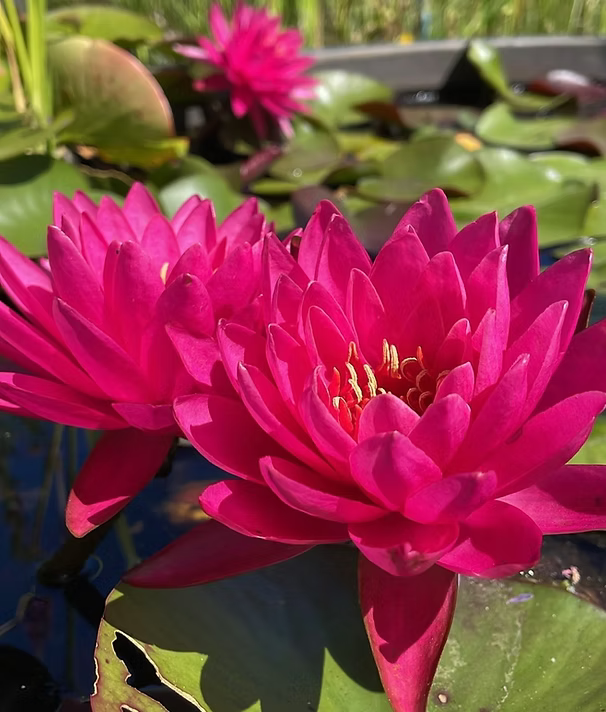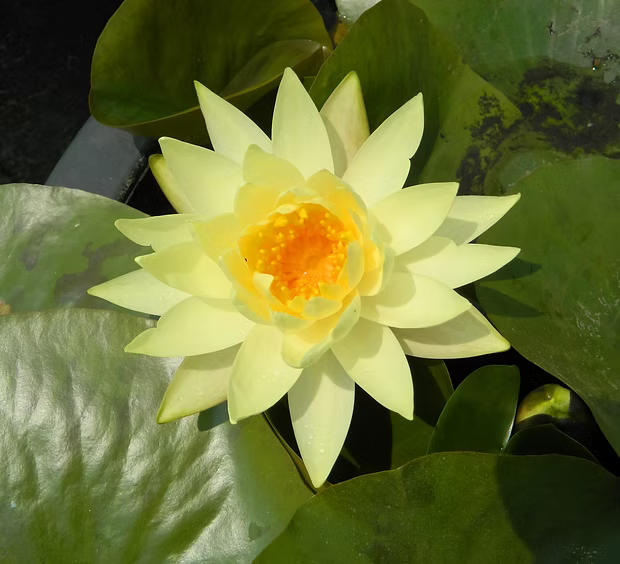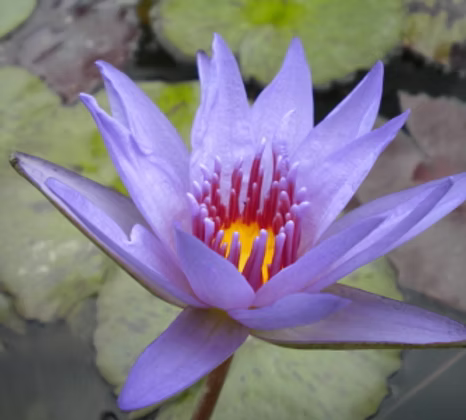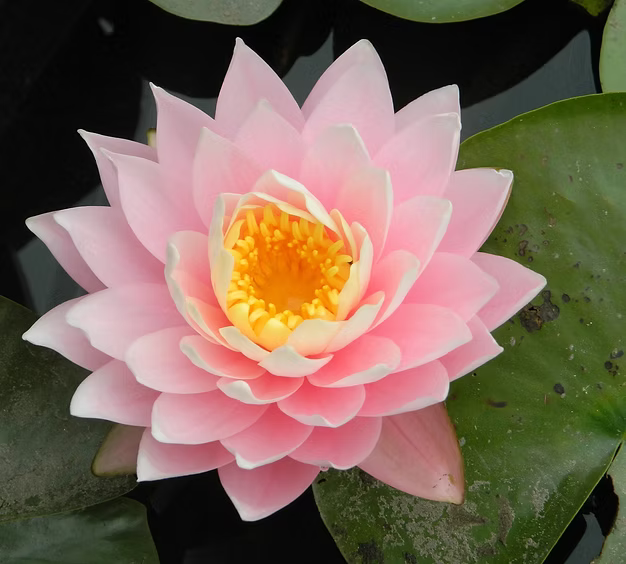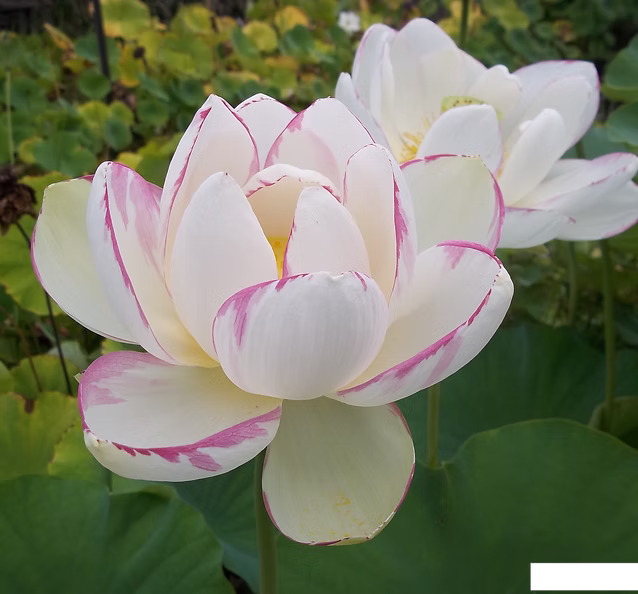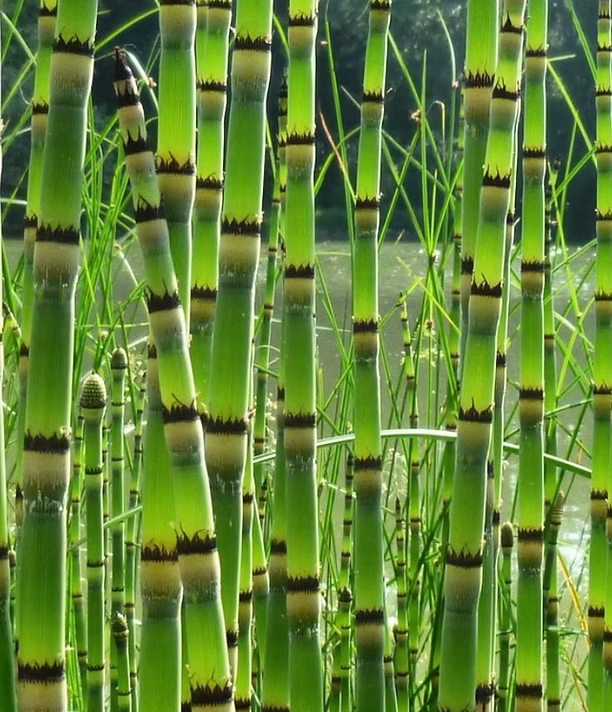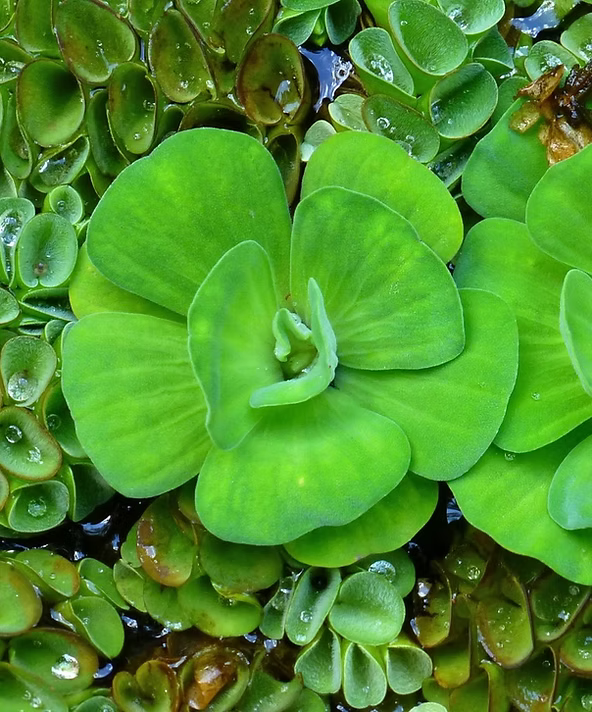All products for sale
253 products
253 products
Sort by:
CAREX REPARIA
Rustic Aquatic Plant for Phytoremediation and Flooded Banks
Carex Riparia is a rustic perennial herbaceous plant, perfect for decorating and protecting banks and ponds. Its linear, light green, downward-facing leaves form large tufts, creating a natural and ornamental effect. The spike-shaped inflorescences add a further decorative touch. Used for phytoremediation, this plant is ideal for consolidating banks subject to periodic flooding, contributing to the stability and health of the aquatic environment.
Characteristics :
- Ornamental Leaves : Linear, light green and downwards facing, forming sturdy tufts.
- Spike Inflorescences : Elegant and discreet, they add a decorative detail.
- Phytoremediation and Stabilization : Excellent for improving water quality and consolidating flooded banks.
- Hardiness : Resistant and suitable for harsh climates.
- Exposure : Prefers full sun or partial shade.
-
Depth and Height :
- Vegetation above water : 90-120 cm.
- Depth under water : 2-5 cm.
- Flowering period : From April to May.
With Carex Riparia, enrich your aquatic garden with a plant that combines beauty, resistance and functionality, ideal for creating a harmonious and sustainable environment.
ELEOCHARIS PALUSTRIS
Eleocharis palustris is a pretty marsh plant, perfect for adding a natural and delicate touch to the edges of your body of water. Its cylindrical, erect and spongy stems, wrapped at the base by a brown sheath, end with a small brownish spikelet that appears during the summer season.
Main Features
- Elegant Marsh Grass : Thin stems, soft in appearance but resistant, ideal for creating movement and plays of light near the water.
- Brown Spikelet : Small inflorescence that blooms from April (IV) to September (IX), adding a light touch of color.
- Vertical Habit : Perfect for giving momentum and verticality to humid areas of the garden.
- Ideal for Full Sun : It grows vigorously and maintains a healthy, compact appearance if placed in well-lit areas.
Cultivation Information
- Flowering : From April (IV) to September (IX).
- Vegetation height : 40-60 cm above water level.
- Planting depth : 2-5 cm below water level.
Choose Eleocharis palustris to give a fresh and natural look to your body of water: a versatile and refined plant, capable of enriching the garden with its discreet grace and the delicate touch of its brown spikelets.
HOUTTUYNIA CORDATA
Perennial herbaceous plant, rustic and ground cover. It has bright red branched stems and dark green heart-shaped leaves, reddish underneath, which smell of orange when rubbed. The white flowers with four petals are gathered in conical heads. Invasive plant. It also grows in humid soils. Plant Information: Full Sun, Partial Shade, Flowering: VII-IX height of vegetation above the water leveldepth below the water level: 30-50 cm0-5 cm
HYDROCOTYLE VULGARIS (Water Bowl)
Evergreen and Decorative Aquatic Plant
Hydrocotyle Vulgaris, known as Water Bowl, is a pretty evergreen aquatic plant ideal for decorating ponds and aquariums. Its almost round leaves, with crenate margins and arranged alternately, create a delicate ornamental effect. The inflorescence, composed of small white flowers grouped in globes, adds further charm during the summer flowering period.
Characteristics :
- Ornamental Leaves : Almost round, with crenate margin and alternate arrangement, for an elegant and natural appearance.
- Delicate Flowers : Globose inflorescences of small white flowers, perfect for enriching the aquatic landscape.
- Evergreen and Versatile : Suitable for ponds and aquariums, for both decorative and functional use.
- Exposure : Prefers full sun for lush growth.
-
Depth and Height :
- Vegetation above water : Up to 10 cm.
- Depth under water : 2-5 cm.
- Flowering period : From June to August.
With Hydrocotyle Vulgaris, enrich your aquatic garden or aquarium with an ornamental plant that combines simplicity and beauty, perfect for creating a serene and welcoming environment.
JUNCUS EFFUSUS SPIRALIS
Evergreen Plant with Decorative Spiral Stems
Juncus Effusus Spiralis is a rustic perennial plant, perfect for adding an unusual and ornamental touch to water gardens. Evergreen and resistant, this variety is distinguished by its dark green cylindrical, wavy or spiral stems, reminiscent of the shape of a corkscrew. The light brown flowers are gathered in graceful cylindrical inflorescences, adding further charm during the summer flowering period.
Characteristics :
- Unique Spiral Stems : Dark green, cylindrical and wavy, with a distinctive ornamental appearance.
- Decorative Flowers : Light brown cymose inflorescences, which bloom in the summer months.
- Evergreen and Rustic : Suitable for different environmental conditions, with a constant presence all year round.
- Exposure : Prefers full sun for optimal growth.
-
Depth and Height :
- Vegetation above water : 40-50 cm.
- Depth under water : 2-5 cm.
- Flowering period : From June to August.
With Juncus Effusus Spiralis, bring a unique and durable decorative element to your pond or water garden, ideal for creating a surprising and natural visual effect.
JUNCUS ARTICULATUS
Versatile Aquatic Plant for Cold and Temperate Zones
Juncus Articulatus is a perennial, rustic and adaptable plant, ideal for enriching ponds and water bodies in gardens located in cold or temperate-cold areas. With a horizontal underground rhizome, this plant grows up to 70 cm in height. The stem, cylindrical and smooth, is accompanied by thin leaves with cylindrical blades and evident transverse septa. The inflorescence is large, with erect or slightly inclined branches, and flowers arranged in glomeruli that add a natural and elegant touch.
Characteristics :
- Elegant Stem : Erect, cylindrical and smooth, for a tidy and decorative appearance.
- Thin Leaves : Cylindrical blades with evident transverse septa.
- Natural Inflorescences : Large, with erect or erect-patent branches and flowers in glomeruli.
- Climate Resistance : Suitable for cold and temperate-cold climates of Europe, Asia and North America.
- Exposure : Prefers full sun or partial shade for optimal growth.
-
Depth and Height :
- Vegetation above water : Up to 60 cm.
- Depth under water : 2-5 cm.
- Flowering period : From June to October.
With Juncus Articulatus, transform your water garden into a natural and resistant oasis, perfect for creating serene and harmonious environments.
LUDWIGIA PALUSTRIS (Ditch poppy)
Rustic Aquatic Plant Suitable for Aquariums
Ludwigia Palustris, known as Ditch Poppy, is a hardy perennial aquatic plant, perfect for decorating ponds and aquariums. Its long, creeping brown stems produce roots at every internode, firmly anchoring themselves on the banks and offering a natural and lush appearance. The leaves vary depending on the environment: opposite and elliptical, green when emerged, while submerged they become lanceolate and reddish. In summer, tiny greenish flowers with four petals, hermaphrodite, bloom in the axils of the leaves, adding a discreet touch of natural charm.
Characteristics :
- Versatile Stems : Creeping and robust, they root at every internode, ideal for consolidating banks.
- Adaptive Leaves : Green and elliptical when emerged, lanceolate and reddish when submerged.
- Simple Flowers : Tiny, greenish, four-petalled, they bloom during the summer.
- Suitable for Aquariums and Ponds : Ideal for decorating bodies of water and creating balanced aquatic habitats.
- Exposure : Prefers full sun or partial shade.
-
Depth and Height :
- Vegetation above water : Up to 20 cm.
- Depth under water : 2-15 cm.
- Flowering period : From June to September.
With Ludwigia Palustris, enrich your water garden or aquarium with a rustic and versatile plant, perfect for creating a natural and decorative environment.
MENYANTHES TRIFOLIATA (Water Clover)
Vigorous and Ornamental Aquatic Plant
Menyanthes Trifoliata, known as Water Clover, is a vigorous-growing aquatic plant, ideal for decorating ponds and bodies of water. Its creeping stems, perfect for covering unsightly edges, bear oval leaves arranged in a clover shape, giving an elegant and natural touch. The pink buds, gathered in racemes, bloom into white flowers edged with pink. The petals, covered with white, curly hair, create a unique and fascinating frosted effect.
Characteristics :
- Decorative Leaves : Oval and arranged in a clover shape, ideal for creating a natural and lush effect.
- Pretty flowers : White with pink edges, made up of 5 petals covered with long white fluff, which gives a frosted appearance.
- Creeping Stems : Vigorous growth, perfect for covering unsightly edges.
- Suitable for Ponds and Wetlands : Perfect for shallow aquatic environments and moist soils.
- Exposure : Prefers full sun or partial shade for optimal growth.
-
Depth and Height :
- Vegetation above water : 20-30 cm.
- Depth under water : 5-15 cm.
- Flowering period : From March to May.
With Menyanthes Trifoliata, enrich your water garden with an elegant and functional plant, ideal for hiding edges and creating an enchanting atmosphere during spring.
Titan
The variety "Titan" stands out for its abundant flowering of purple-red flowers, which create a beautiful accent of color in the garden.
Main features:
- Flowers: Abundant and of an intense purple-red color, they offer an extraordinary visual impact and add vivacity and chromatic richness to the environment.
- Leaves: The leaves have diffuse shades of purple, which complement the majestic appearance of the flowers and contribute to a harmonious decorative effect.
- Stems: The stems of the plant are strongly heliotropic, that is, they have the ability to follow the movement of the sun in the sky. This characteristic makes them particularly dynamic, with the flowers orienting themselves towards the light to maximize photosynthesis and maintain an illuminated position.
Overall Effect: "Titán" offers a breathtaking visual experience with its vivid purple flowers and foliage hues, while blending harmoniously with its surroundings. The heliotropic stems add an interactive and lively element, making this plant a spectacular addition to sunny gardens and outdoor spaces that benefit from full sun exposure.
Stratiotes aloides (Ditch Knifegrass)
Stratiotes aloides is a rare and highly sought-after aquatic plant. It has dark green, stiff, elongated and pointed leaves with serrated edges, arranged in submerged rosettes that resemble pineapple tufts.
In June, the plant emerges to the surface, displaying a small, three-petaled white flower that blooms alone in the axil of a leaf rosette. After the bloom and subsequent wilting of the flower, the plant begins to sink to the bottom of the pond, where it will spend the winter, only to re-emerge and bloom again with the arrival of the following spring.
Plant Information:
- Exposure: Full sun
- Flowering: June - August
Stratiotes aloides is ideal for sunny ponds and makes a fascinating and rare addition to aquatic environments.
Trapa natans verbanensis (Water chestnut)
Trapa natans verbanensis, commonly known as water chestnut, is an aquatic plant characterized by diamond-shaped, serrated leaves that are arranged in a rosette. The leaves are olive green and tend to turn red in the fall, adding a seasonal touch to the aquatic landscape. The stems of the plant are reddish and support small white flowers.
Reproductive Cycle:
- The plant bears fruit in October. After pollination, the fruit undergoes a particular process: it folds under water, detaches from the plant and settles on the bottom of the body of water.
- There, the fruit will ripen and give rise to a new plant that will appear the following spring.
- Once the pulp is used up, the empty shell of the fruit rises to the surface again, completing the life cycle.
Plant Information:
- Exposure: Full sun
Trapa natans verbanensis is ideal for ponds and lakes exposed to the sun, where its singular reproductive cycle and the ornamental aspect of its color changes offer considerable botanical and aesthetic interest.
White Astilbe
White Astilbe is a perennial and rustic herbaceous plant, appreciated for its elegance and the beauty of its flowers. The leaves, finely engraved, show copper reflections when they are young and take on a dark green color once adult. The small white flowers are gathered in soft feathery panicles that emerge above the leaves, creating a delicate and scenic effect.
Plant Information:
- Height: 60–90 cm in moist soils
- Flowering: June - August
- Exposure: It can grow in full sun, partial shade or shade, as long as the soil is moist
This plant is ideal for borders and humid areas of the garden, offering a touch of sophistication even in partially shaded or fully shaded areas.
Pink Astilbe
Pink Astilbe is a perennial and rustic herbaceous plant, much appreciated for its elegance and the beauty of its pink flowers. The leaves, finely engraved, have coppery reflections during youth and take on a dark green color with maturity. The small pink flowers are gathered in soft feathery panicles that stand out above the foliage, creating a delicate and scenic effect.
Plant Information:
- Height: 60–90 cm in moist soils
- Flowering: June - August
- Exposure: Suitable for full sun, partial shade and shade, as long as the soil remains moist
This plant is ideal for borders and areas of the garden with high humidity, offering a touch of sophistication and color even in partially or fully shaded areas.
FAQs
Use this text to answer questions in as much detail as possible for your customers.
Ogni pianta ha esigenze specifiche, ma in generale, le radici delle piante palustri devono essere immerse nel substrato, mentre le galleggianti vanno lasciate libere in superficie. L'uso di fertilizzanti naturali e il controllo della luce solare aiutano a mantenerle in salute. Ti invieremo una guida dettagliata con il tuo acquisto.
Sì! Le piante ossigenanti come il ceratophyllum assorbono i nutrienti in eccesso e riducono la crescita delle alghe. Le piante galleggianti come la lattuga d’acqua forniscono ombra e limitano l’evaporazione, contribuendo all’equilibrio dell’ecosistema acquatico.

